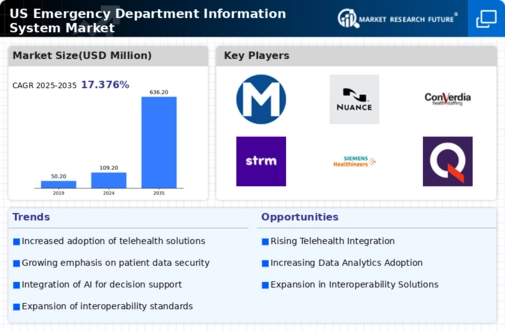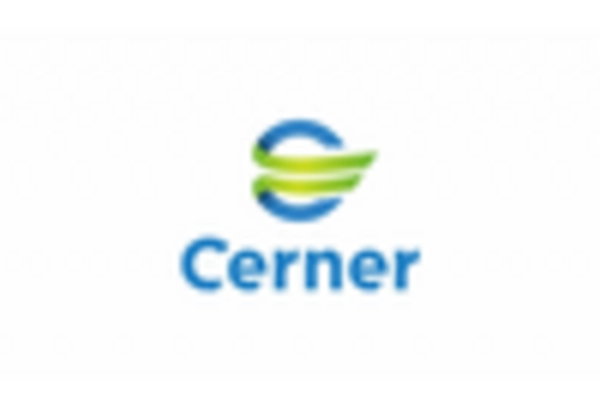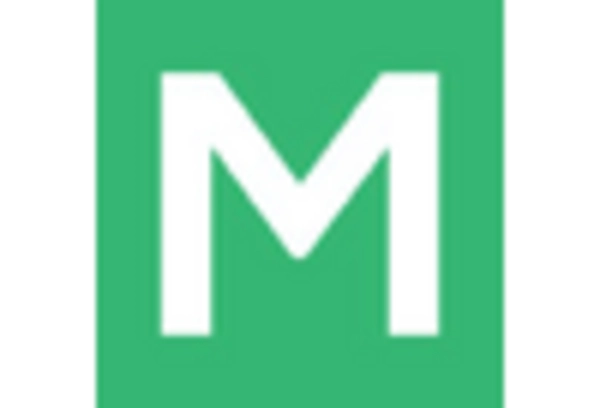Regulatory Pressures
Regulatory pressures are a significant driver influencing the emergency department-information-system market. Compliance with healthcare regulations, such as the Health Insurance Portability and Accountability Act (HIPAA) and the Affordable Care Act (ACA), necessitates the implementation of robust information systems. These regulations mandate the secure handling of patient data and the provision of quality care, compelling emergency departments to invest in systems that ensure compliance. Failure to adhere to these regulations can result in substantial fines and legal repercussions, motivating healthcare facilities to prioritize the adoption of compliant information systems. As regulatory scrutiny intensifies, the emergency department-information-system market is expected to expand as organizations seek solutions that facilitate compliance and enhance operational efficiency.
Rising Patient Volume
The increasing patient volume in emergency departments is a primary driver for the emergency department-information-system market. As the population ages and the prevalence of chronic diseases rises, emergency departments are experiencing higher patient influx. According to the American Hospital Association, emergency department visits in the US reached approximately 145 million annually. This surge necessitates efficient information systems to manage patient data, streamline workflows, and enhance care delivery. Consequently, healthcare facilities are investing in advanced information systems to accommodate this growing demand, thereby propelling the market forward. The need for real-time data access and improved patient management solutions is becoming increasingly critical, indicating a robust growth trajectory for the emergency department-information-system market.
Technological Advancements
Technological advancements play a crucial role in shaping the emergency department-information-system market. Innovations such as artificial intelligence, machine learning, and telemedicine are transforming how emergency departments operate. These technologies enhance diagnostic accuracy, optimize resource allocation, and improve patient outcomes. For instance, AI-driven analytics can predict patient admission rates, allowing for better staffing and resource management. The market is projected to grow significantly, with estimates suggesting a compound annual growth rate (CAGR) of around 10% over the next five years. As healthcare providers increasingly adopt these technologies, the demand for sophisticated information systems that integrate these advancements is likely to rise, further driving the market.
Focus on Patient-Centric Care
The shift towards patient-centric care is reshaping the emergency department-information-system market. Healthcare providers are increasingly prioritizing patient experience and outcomes, leading to the adoption of systems that enhance communication and engagement. Features such as patient portals, real-time updates, and streamlined discharge processes are becoming essential components of emergency department information systems. This focus on patient satisfaction is supported by studies indicating that improved communication can lead to better health outcomes and reduced readmission rates. As healthcare organizations strive to meet patient expectations, the demand for innovative information systems that support these goals is likely to grow, driving the market forward.
Increased Investment in Healthcare Infrastructure
Increased investment in healthcare infrastructure is a vital driver for the emergency department-information-system market. The US government and private sector are allocating substantial funds to enhance healthcare facilities, particularly in underserved areas. This investment aims to improve access to emergency care and upgrade existing systems to meet modern healthcare demands. According to the Centers for Medicare & Medicaid Services, healthcare spending in the US is projected to reach $6 trillion by 2027, with a significant portion directed towards emergency services. As healthcare facilities expand and modernize, the need for advanced information systems that can support these developments becomes paramount, thereby propelling the emergency department-information-system market.

















Leave a Comment